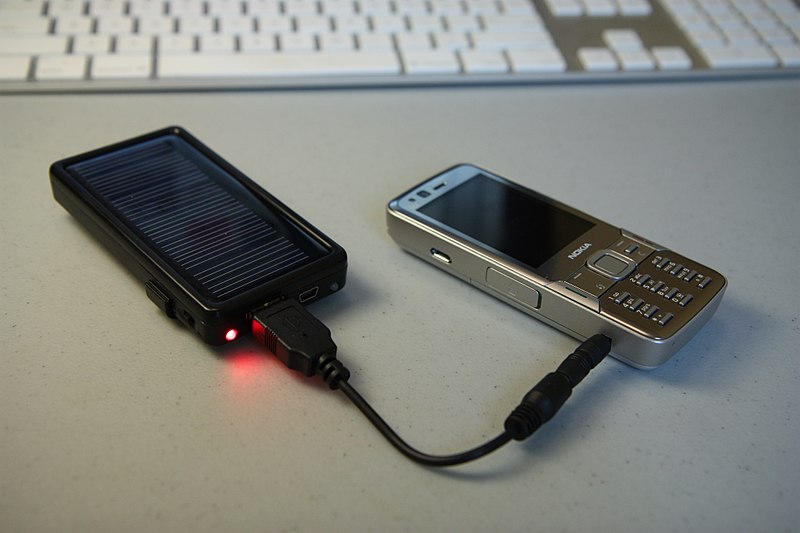A solar device that can extract energy from the sun and use it to power electronics and package it in a convenient size and at a reasonable price. Imagine that. You will not have to look for an outlet and ask to use it. You will have your own and the electricity is free from the sun.
 Source: Wikimedia Commons
Source: Wikimedia CommonsAssuming you can get your phone to work in another country, do you now that many countries use 220 volts on their grid? The plugs are even different. Try plugging in any of your devices with without a transformer and you will fry your device. A transformer is a heavy small gadget whose cost starts at around $30. But, you won’t need that if you have a solar charger.
Solar Power for Your Gadgets
Solar power is nothing new and has been around for quite a while. It has gained substantial footholds in government, industry, and residential and commercial construction projects. There are federally funded initiatives that allow you to install solar energy solutions with the help of government subsidies to make them more affordable. But the idea that anywhere you go you can power your gadgets is a fairly new reality for the modern consumer. Past solutions suffered and were never really adopted. But to remain unable to tap such an enormous and universally available energy source as the sun is frustrating for those for whom mobile commuting is a way of life.
Mono-Crystalline Solar Panels
The consumer grade solar gadget charger has been held captive by technology until this point. Only now have companies been able to create a device that can extract solar energy from the sun and use it to power electronics. The quality of solar panels has been a stumbling block in the past but the introduction of mono-crystalline panels has changed this. They are powerful , durable, and extremely long lasting. They can pull electricity from light energy in sufficient amounts as to charge something like a smartphone in the same amount of time as can a regular wall plug. And it can do it while still being small enough to tote around with you in a backpack and strong enough that you don’t have to pretend your bag is full of priceless porcelain antiques every time you put it down.
The other obstacle in the development of an affordable iPhone portable solar charger was the lack of a ready market. Companies do not invest money into something no one will buy unless they wish to lose money. But the people of today are ready for such convenient portable power solutions. The people who do mobile computing are no longer just geeks and businessmen. They are people of every walk of life and who enjoy diverse hobby’s. These are people who want to be able to charge their phone or music listening device on a hike or camp out or canoe trip. They want to charge things at the park with their kids and friends and don’t want to have to go looking for a plug every time they turn around. They are pretty much everyone, and they are you.
